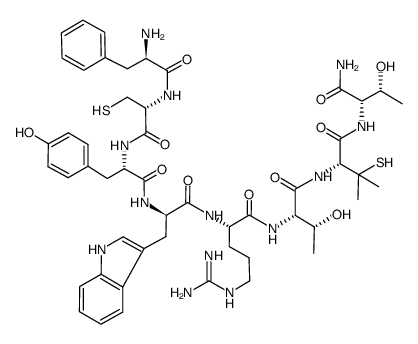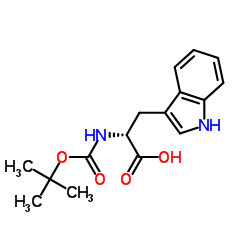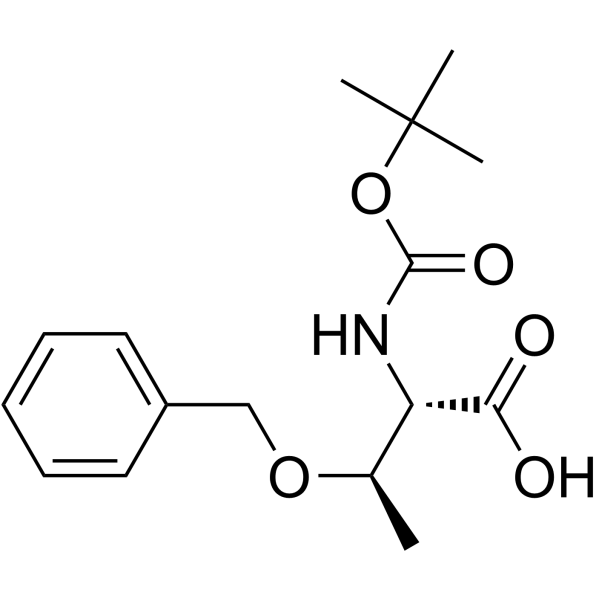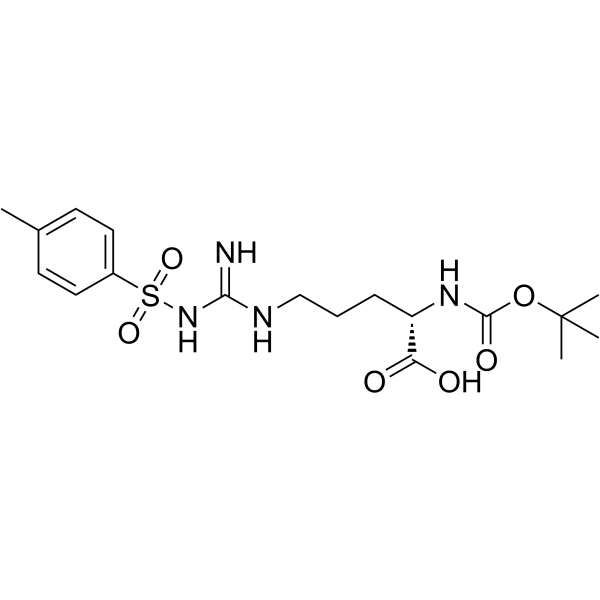H-D-Phe-Cys-Tyr-D-Trp-Arg-Thr-Pen-Thr-NH2 (Disulfide bond between Cys2 and Pen7)
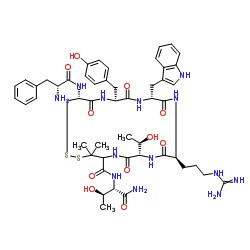
H-D-Phe-Cys-Tyr-D-Trp-Arg-Thr-Pen-Thr-NH2 (Disulfide bond between Cys2 and Pen7) structure
|
Common Name | H-D-Phe-Cys-Tyr-D-Trp-Arg-Thr-Pen-Thr-NH2 (Disulfide bond between Cys2 and Pen7) | ||
|---|---|---|---|---|
| CAS Number | 103429-32-9 | Molecular Weight | 1104.304 | |
| Density | 1.5±0.1 g/cm3 | Boiling Point | N/A | |
| Molecular Formula | C51H69N13O11S2 | Melting Point | N/A | |
| MSDS | Chinese USA | Flash Point | N/A | |
Use of H-D-Phe-Cys-Tyr-D-Trp-Arg-Thr-Pen-Thr-NH2 (Disulfide bond between Cys2 and Pen7)CTAP is a potent, highly selective, and brain penetrant μ opioid receptor antagonist (IC50=3.5 nM) and displays over 1200-fold selectivity over δ opioid (IC50=4500 nM) and somatostatin receptors. CTAP can be used for the study of L-DOPA-induced dyskinesia (LID)[1]. |
| Name | ctap |
|---|---|
| Synonym | More Synonyms |
| Description | CTAP is a potent, highly selective, and brain penetrant μ opioid receptor antagonist (IC50=3.5 nM) and displays over 1200-fold selectivity over δ opioid (IC50=4500 nM) and somatostatin receptors. CTAP can be used for the study of L-DOPA-induced dyskinesia (LID)[1]. |
|---|---|
| Related Catalog | |
| Target |
IC50: 3.5 nM (μ opioid receptor) IC50: 4500 nM (δ opioid receptor)[1] |
| References |
| Density | 1.5±0.1 g/cm3 |
|---|---|
| Molecular Formula | C51H69N13O11S2 |
| Molecular Weight | 1104.304 |
| Exact Mass | 1103.468140 |
| PSA | 461.79000 |
| LogP | 0.44 |
| Index of Refraction | 1.699 |
| InChIKey | OFMQLVRLOGHAJI-KOFBULAQSA-N |
| SMILES | CC(O)C(NC(=O)C1NC(=O)C(C(C)O)NC(=O)C(CCCN=C(N)N)NC(=O)C(Cc2c[nH]c3ccccc23)NC(=O)C(Cc2ccc(O)cc2)NC(=O)C(NC(=O)C(N)Cc2ccccc2)CSSC1(C)C)C(N)=O |
| Storage condition | -20°C |
| Personal Protective Equipment | Eyeshields;Gloves;type N95 (US);type P1 (EN143) respirator filter |
|---|---|
| Hazard Codes | Xi |
| RIDADR | NONH for all modes of transport |
| WGK Germany | 3.0 |
|
~% 
H-D-Phe-Cys-Tyr... CAS#:103429-32-9 |
| Literature: Journal of Medicinal Chemistry, , vol. 29, # 11 p. 2370 - 2375 |
|
~% 
H-D-Phe-Cys-Tyr... CAS#:103429-32-9 |
| Literature: Journal of Medicinal Chemistry, , vol. 43, # 4 p. 569 - 580 |
|
~% 
H-D-Phe-Cys-Tyr... CAS#:103429-32-9 |
| Literature: Journal of Medicinal Chemistry, , vol. 43, # 4 p. 569 - 580 |
|
~% 
H-D-Phe-Cys-Tyr... CAS#:103429-32-9 |
| Literature: Journal of Medicinal Chemistry, , vol. 43, # 4 p. 569 - 580 |
|
~% 
H-D-Phe-Cys-Tyr... CAS#:103429-32-9 |
| Literature: Journal of Medicinal Chemistry, , vol. 43, # 4 p. 569 - 580 |
|
Buprenorphine decreases the CCL2-mediated chemotactic response of monocytes.
J. Immunol. 194(7) , 3246-58, (2015) Despite successful combined antiretroviral therapy, ∼ 60% of HIV-infected people exhibit HIV-associated neurocognitive disorders (HAND). CCL2 is elevated in the CNS of infected people with HAND and me... |
|
|
Effect of μ-opioid agonist DAMGO on surface CXCR4 and HIV-1 replication in TF-1 human bone marrow progenitor cells.
BMC Res. Notes 7 , 752, (2014) Approximately one-third of the AIDS cases in the United States have been attributed to the use of injected drugs, frequently involving the abuse of opioids. Consequently, it is critical to address whe... |
|
|
Dopamine/Tyrosine Hydroxylase Neurons of the Hypothalamic Arcuate Nucleus Release GABA, Communicate with Dopaminergic and Other Arcuate Neurons, and Respond to Dynorphin, Met-Enkephalin, and Oxytocin.
J. Neurosci. 35 , 14966-82, (2015) We employ transgenic mice with selective expression of tdTomato or cre recombinase together with optogenetics to investigate whether hypothalamic arcuate (ARC) dopamine/tyrosine hydroxylase (TH) neuro... |
| CYS2,TYR3,ARG5,PEN7-AMIDE |
| D-Phe-L-Cys-L-Tyr-D-Trp-L-Arg-L-Thr-L-Pen-L-Thr-NH2 |
| M.W. 1104.30 C51H69N13O11S2 |
| 1,2-Dithia-5,8,11,14,17-pentaazacycloeicosane-4-carboxamide, N-[(1S,2R)-1-(aminocarbonyl)-2-hydroxypropyl]-10-[3-[(aminoiminomethyl)amino]propyl]-19-[[(2R)-2-amino-1-oxo-3-phenylpropyl]amino]-7-[(1R)-1-hydroxyethyl]-16-[(4-hydroxyphenyl)methyl]-13-(1H-indol-3-ylmethyl)-3,3-dimethyl-6,9,12,15,18-pentaoxo-, (4R,7S,10S,13R,16S,19R)- |
| cyclic D-Pen-Cys-Tyr-D-Trp-Arg-ThrPen-Thr-NH2 |
| 1,2-Dithia-5,8,11,14,17-pentaazacycloeicosane-4-carboxamide, N-[(1S,2R)-1-(aminocarbonyl)-2-hydroxypropyl]-10-[3-[(aminoiminomethyl)amino]propyl]-19-[[(2R)-2-amino-1-oxo-3-phenylpropyl]amino]-7-[(1R)-1-hydroxyethyl]-16-[(4-hydroxyphenyl)methyl]-13-(1H-indol-3-ylmethyl)-3,3-dimethyl-6,9,12,15,18-pentaoxo-, (7S,10S,13R,16S,19R)- |
| H-D-PHE-CYS-TYR-D-TRP-ARG-THR-PEN-THR-NH2 |
| (7S,10S,13R,16S,19R)-N-[(2S,3R)-1-Amino-3-hydroxy-1-oxo-2-butanyl]-10-(3-carbamimidamidopropyl)-16-(4-hydroxybenzyl)-7-[(1R)-1-hydroxyethyl]-13-(1H-indol-3-ylmethyl)-3,3-dimethyl-6,9,12,15,18-pentaoxo-19-(D-phenylalanylamino)-1,2-dithia-5,8,11,14,17-pentaazacycloicosane-4-carboxamide |
| (4R,7S,10S,13R,16S,19R)-N-[(2S,3R)-1-Amino-3-hydroxy-1-oxo-2-butanyl]-10-(3-carbamimidamidopropyl)-16-(4-hydroxybenzyl)-7-[(1R)-1-hydroxyethyl]-13-(1H-indol-3-ylmethyl)-3,3-dimethyl-6,9,12,15,18-pentaoxo-19-(D-phenylalanylamino)-1,2-dithia-5,8,11,14,17-pentaazacycloicosane-4-carboxamide |
| D-Phe-Cys-Tyr-D-Trp-Arg-Thr-Pen-Thr-NH2 |
